Societe BIC Bundle
Who Really Owns Societe BIC?
Ever wondered who steers the ship behind the iconic Societe BIC SWOT Analysis, the global powerhouse behind pens, lighters, and shavers? Understanding the BIC Company's ownership is key to grasping its strategic moves and future potential. From its humble beginnings to its current global footprint, BIC's ownership story is a fascinating journey.
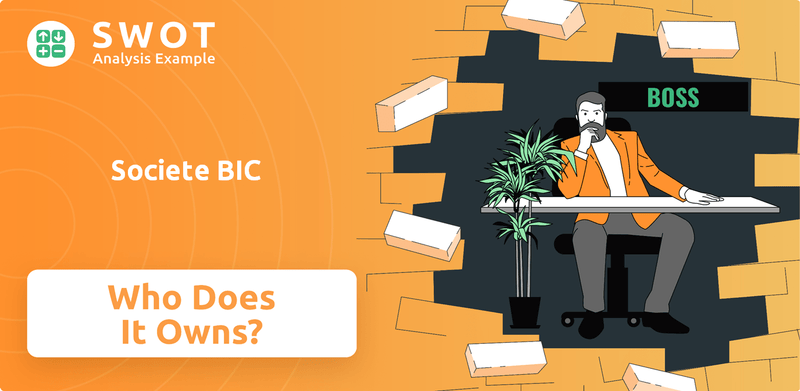
The BIC Group's ownership structure is a critical factor influencing its long-term vision and operational strategies. Knowing who owns BIC pens, and the company as a whole, offers insights into the decision-making processes that drive the BIC brand. This exploration of BIC ownership delves into the influence of its founding family, key shareholders, and the impact of being a publicly-traded entity. Understanding the BIC company history and ownership helps to understand the company's resilience in a competitive market.
Who Founded Societe BIC?
The BIC Company, officially known as Société BIC S.A., was established in 1945. The founder was Marcel Bich. He initially focused on manufacturing parts for fountain pens and mechanical pencils.
Marcel Bich's vision was to create simple, functional, and affordable writing instruments. The company began as Société PPA (Porte-Plume, Porte-Mines et Accessoires). Marcel Bich's background in manufacturing significantly influenced the company's early strategic direction.
Details regarding the initial equity split or specific shareholding percentages are not publicly available. Marcel Bich was the primary driving force and sole founder. The company's early growth was largely self-funded through its operational revenues.
The early ownership of Société BIC was primarily centered around its founder, Marcel Bich. There are no widely documented instances of early ownership disputes or buyouts that significantly shaped the company's initial structure.
- Marcel Bich's singular vision shaped the company's operational control and strategic direction.
- The company's focus was on product development and market penetration.
- Early financial strategies relied on self-funding through operational revenues.
- This approach laid the foundation for the company's future global expansion.
Societe BIC SWOT Analysis
- Complete SWOT Breakdown
- Fully Customizable
- Editable in Excel & Word
- Professional Formatting
- Investor-Ready Format
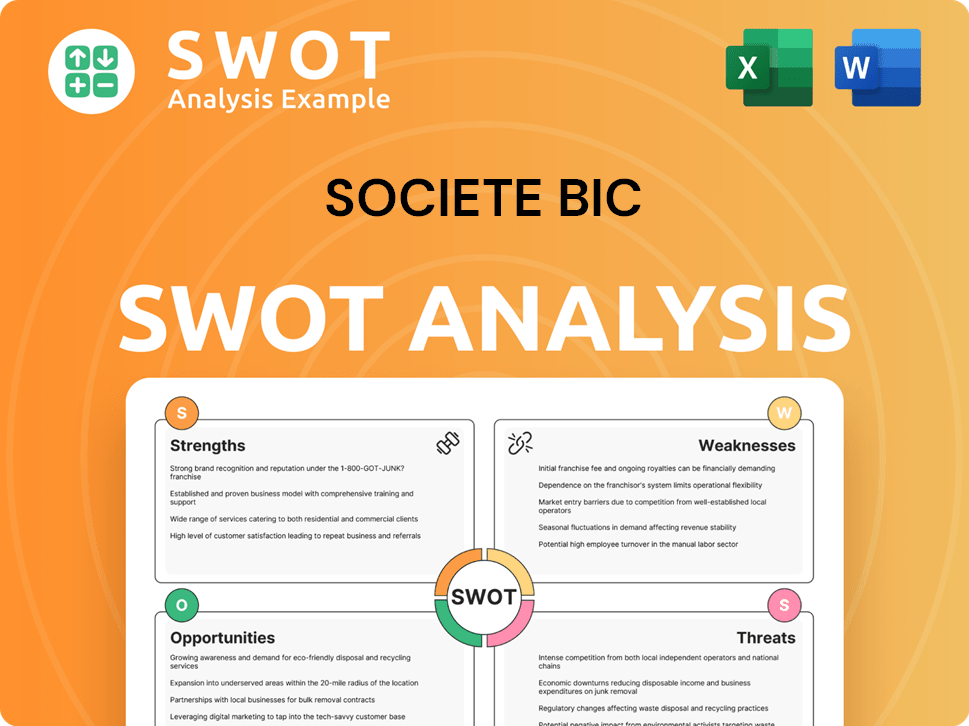
How Has Societe BIC’s Ownership Changed Over Time?
The evolution of Societe BIC's ownership structure is a key part of its history. The company's transition to a publicly traded entity in 1972, through an initial public offering (IPO) on the Paris Stock Exchange, was a major step. This move brought in public shareholders, changing the ownership dynamics of the BIC Group.
As of early 2025, the ownership of the BIC Company reflects a mix of family control and institutional investment. The Bich family remains the largest shareholder, demonstrating their continued influence over the company's strategic direction and governance.
| Ownership Milestone | Details | Impact |
|---|---|---|
| 1972 | Initial Public Offering (IPO) on the Paris Stock Exchange | Introduced public shareholders, altering the ownership structure. |
| December 31, 2024 | Bich family holds approximately 44.5% of shares (59.9% of voting rights) | Maintains significant family influence over strategic decisions. |
| December 31, 2024 | BlackRock, Inc. holds 5.12% of shares (4.29% of voting rights) | Represents a significant institutional investor. |
| December 31, 2024 | Norges Bank holds 2.05% of shares (1.72% of voting rights) | Indicates diversified investor base. |
| December 31, 2024 | Amundi Asset Management holds 3.23% of shares (2.71% of voting rights) | Contributes to the institutional investor presence. |
The presence of major institutional shareholders, such as BlackRock, Norges Bank, and Amundi Asset Management, alongside the Bich family's significant stake, shapes the BIC ownership structure. Institutional investors influence company strategy through shareholder meetings and corporate governance decisions. The Bich family's continued control ensures a long-term strategic perspective, balancing market pressures with sustained brand development. As of December 31, 2024, the Bich family's stake is a substantial 44.5% of shares, and the major institutional investors also hold considerable positions, contributing to the BIC Company's diversified ownership.
The BIC Company's ownership structure combines family control with institutional investment.
- The Bich family is the largest shareholder.
- Institutional investors like BlackRock and Norges Bank hold significant stakes.
- The IPO in 1972 marked a key change in ownership.
- This structure influences strategic direction and governance.
Societe BIC PESTLE Analysis
- Covers All 6 PESTLE Categories
- No Research Needed – Save Hours of Work
- Built by Experts, Trusted by Consultants
- Instant Download, Ready to Use
- 100% Editable, Fully Customizable
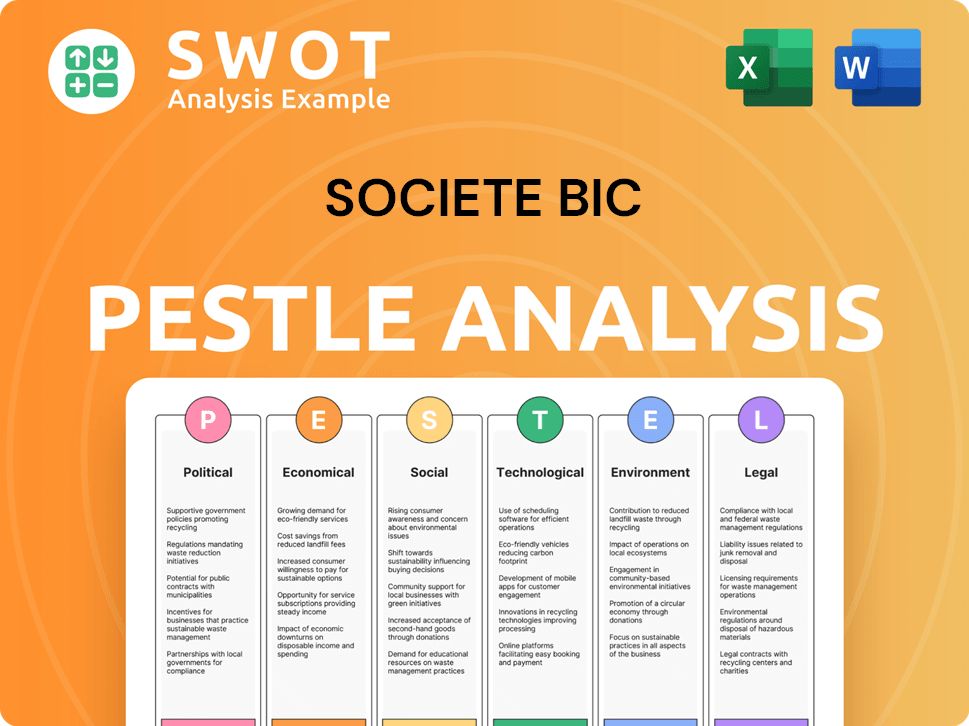
Who Sits on Societe BIC’s Board?
The Board of Directors of Société BIC S.A. is key to the company's governance, balancing family representation, major shareholders, and independent voices. As of early 2025, the Board includes members representing the founding family, ensuring their strategic vision is maintained. Gonzalve Bich, for example, serves as the Chief Executive Officer and a director, directly linking family ownership to executive leadership. Other board members include independent directors who bring external perspectives and expertise, crucial for robust corporate governance.
The structure of the board ensures a mix of experience and perspectives, vital for guiding the Brief History of Societe BIC. This blend helps in navigating market challenges and seizing opportunities, ensuring the company's long-term success. The board's composition reflects a commitment to both continuity and adaptability, crucial for a global brand like BIC.
| Board Member | Role | Affiliation |
|---|---|---|
| Gonzalve Bich | Chief Executive Officer & Director | Bich Family |
| Independent Directors | Various | External Experts |
| Other Directors | Various | Shareholder Representatives |
The voting structure of BIC is characterized by a dual-class share system, which grants the Bich family disproportionate voting power compared to their economic ownership. As of December 31, 2024, while the Bich family holds approximately 44.5% of the shares, they control 59.9% of the voting rights. This structure, often involving double voting rights for long-term registered shares, allows the family to maintain significant control over strategic decisions, board appointments, and major corporate actions, even as their economic ownership might fluctuate. There have been no major public proxy battles or activist investor campaigns reported in recent times that have significantly challenged this voting structure or the family's control. This stable governance structure allows BIC to pursue long-term strategies without being unduly influenced by short-term market pressures.
The BIC Company's ownership structure is designed to balance family control with broader shareholder interests. The dual-class share system gives the Bich family significant voting power.
- The Bich family's voting power is around 59.9% as of December 2024.
- This structure helps maintain long-term strategic focus.
- Independent directors provide external oversight.
- This structure allows BIC to pursue long-term strategies without being unduly influenced by short-term market pressures.
Societe BIC Business Model Canvas
- Complete 9-Block Business Model Canvas
- Effortlessly Communicate Your Business Strategy
- Investor-Ready BMC Format
- 100% Editable and Customizable
- Clear and Structured Layout
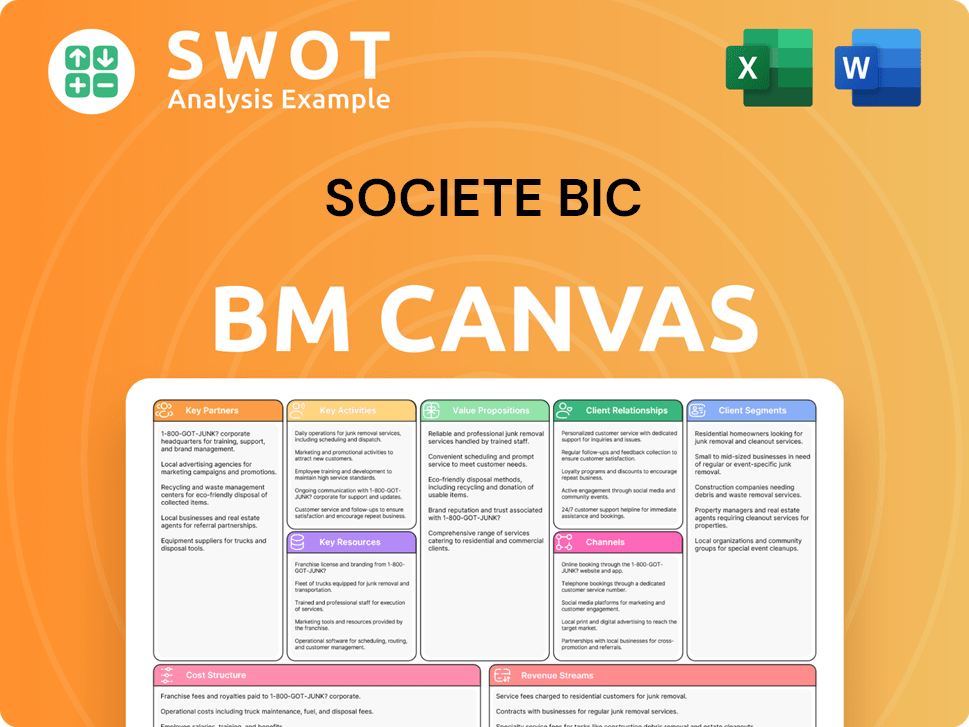
What Recent Changes Have Shaped Societe BIC’s Ownership Landscape?
Over the past few years, the ownership structure of Société BIC S.A. has remained relatively stable. The Bich family continues to hold a significant controlling stake, which is a key feature of the company's ownership profile. As of December 31, 2024, the family controlled 59.9% of the voting rights, even though they held 44.5% of the shares. This structure helps protect the company from hostile takeovers and supports a long-term strategic focus.
Recent financial moves by the BIC Company include a share buyback program. By the end of December 31, 2024, BIC had repurchased 1,500,000 of its own shares, totaling €95.7 million. This action shows a strategy to provide value to shareholders and potentially consolidate ownership. Additionally, the company has made strategic acquisitions, such as Tattly and Rocketbook in 2020, to expand its product range and market reach. These acquisitions have not significantly changed the fundamental ownership structure. While there's a trend of increased institutional ownership across markets, the founding family's strong influence sets the BIC Group apart. There have been no public announcements suggesting a potential privatization or a major change in the family's long-term ownership plans. If you're interested in learning more about the competitive landscape of this company, you can check out the Competitors Landscape of Societe BIC.
The current ownership structure of Societe BIC, with the Bich family maintaining control, provides stability. This stability is important for long-term strategic planning and shields the company from short-term pressures. The share buyback program and strategic acquisitions are indicative of the company's financial health and its focus on growth and shareholder value, without altering the core ownership dynamics.
The Bich family controls BIC through a dual-class share structure. They hold about 44.5% of the shares but control 59.9% of the voting rights. This setup ensures the family's influence and protects against unwanted takeovers.
BIC has been active in share buybacks. By December 31, 2024, they repurchased 1,500,000 shares for €95.7 million. They also made acquisitions like Tattly and Rocketbook to diversify the product portfolio and market reach.
The Bich family's continued control provides stability. This allows BIC to focus on long-term strategies. Institutional ownership is present, but the family's influence remains a distinctive feature of BIC's corporate governance.
There are no public indications of privatization or significant shifts in the family's ownership intentions. The current structure supports the company's strategic direction. The company's direction remains stable.
Societe BIC Porter's Five Forces Analysis
- Covers All 5 Competitive Forces in Detail
- Structured for Consultants, Students, and Founders
- 100% Editable in Microsoft Word & Excel
- Instant Digital Download – Use Immediately
- Compatible with Mac & PC – Fully Unlocked
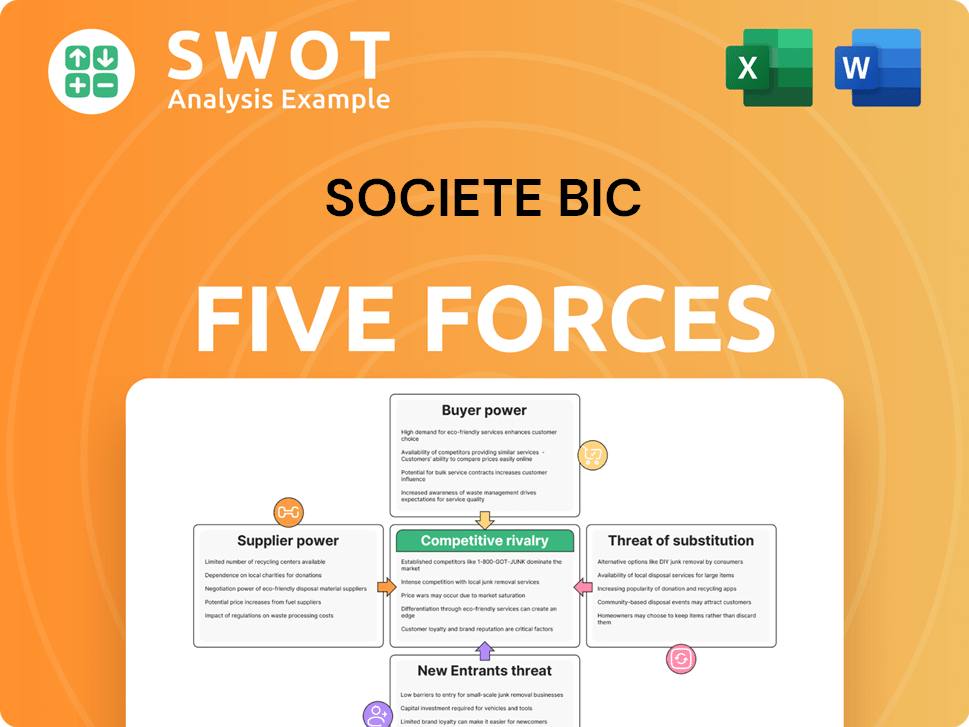
Related Blogs
- What are Mission Vision & Core Values of Societe BIC Company?
- What is Competitive Landscape of Societe BIC Company?
- What is Growth Strategy and Future Prospects of Societe BIC Company?
- How Does Societe BIC Company Work?
- What is Sales and Marketing Strategy of Societe BIC Company?
- What is Brief History of Societe BIC Company?
- What is Customer Demographics and Target Market of Societe BIC Company?
Disclaimer
All information, articles, and product details provided on this website are for general informational and educational purposes only. We do not claim any ownership over, nor do we intend to infringe upon, any trademarks, copyrights, logos, brand names, or other intellectual property mentioned or depicted on this site. Such intellectual property remains the property of its respective owners, and any references here are made solely for identification or informational purposes, without implying any affiliation, endorsement, or partnership.
We make no representations or warranties, express or implied, regarding the accuracy, completeness, or suitability of any content or products presented. Nothing on this website should be construed as legal, tax, investment, financial, medical, or other professional advice. In addition, no part of this site—including articles or product references—constitutes a solicitation, recommendation, endorsement, advertisement, or offer to buy or sell any securities, franchises, or other financial instruments, particularly in jurisdictions where such activity would be unlawful.
All content is of a general nature and may not address the specific circumstances of any individual or entity. It is not a substitute for professional advice or services. Any actions you take based on the information provided here are strictly at your own risk. You accept full responsibility for any decisions or outcomes arising from your use of this website and agree to release us from any liability in connection with your use of, or reliance upon, the content or products found herein.